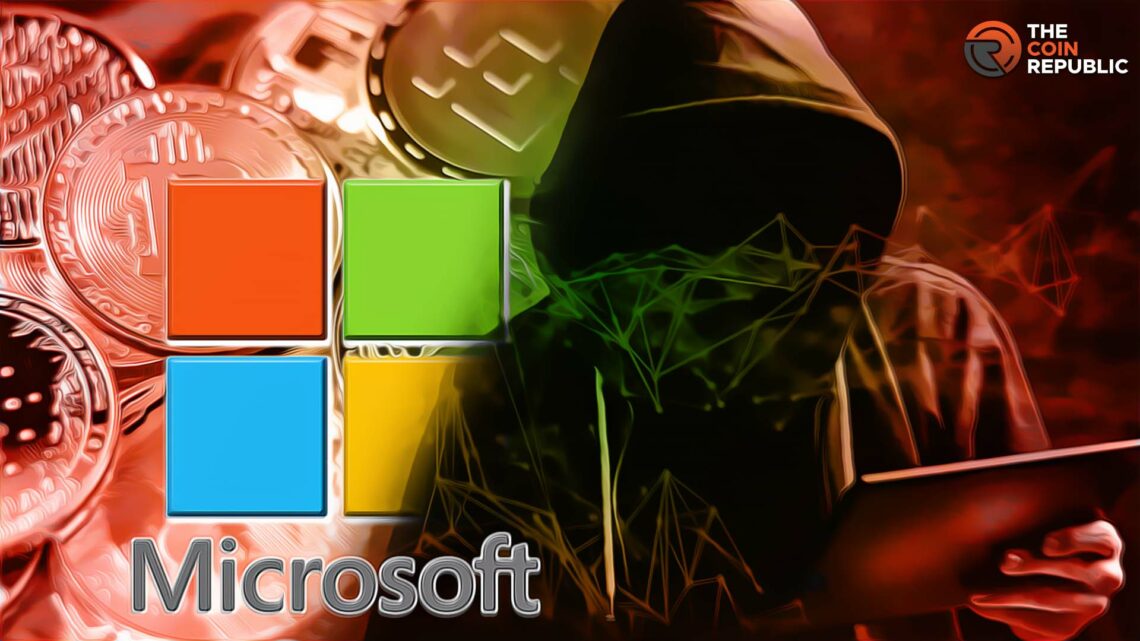- 1 Microsoft has collaborated with Intel to fight against crypto mining attacks.
- 2 Crypto hacks have declined by over 70% this year.
The Crypto sector is growing steadily and attracting cybercriminals at almost the same pace. Bad actors are coming up with new ideas to enter and corrupt digital asset ecosystems. Recently, researchers at Microsoft, an American multinational technology company, identified attackers targeting open-source softwares like LINUX to deploy a range of malicious tools to enable cryptojacking using the victim’s device.
Microsoft Turning Into a Crypto Steward
The report suggests hackers are going for Internet of Things (IoT) devices and LINUX-based systems to attack via a patched version of OpenSSH, a suite of secure networking utilities. Hackers simply install crypto mining softwares after seizing control of a victim’s device.
Threat actors are using backdoors to execute the attack using tools including rootkits, a malicious software providing root-level access to a computer, and IRC bot, an independent program appearing as clients to connect with Internet Relay Chat (IRC), to steal resources for crypto mining.
Microsoft researchers said, “Utilizing an established criminal infrastructure that has incorporated the use of a Southeast Asian financial institution’s subdomain as a command and control (C2) server, the threat actors behind the attack use a backdoor that deploys a wide array of tools and components such as rootkits and an IRC bot to steal device resources for mining operations.”
In April 2021, the Windows maker collaborated with Intel Corporation, a leading California-based chipmaker, against cryptojacking. The announcement highlighted that April 2020 saw over $200 Billion worth of crypto traded across several platforms. 2020 through 2021 was a golden period for crypto, adoption accelerated rapidly as Bitcoin (BTC) hit its all time high by November 2021.
Crypto Hacks have Declined During Q1 2023
Crypto mining malwares leverage a device’s computing power to mine cryptocurrencies. An individual can identify if their device is bugged with mining malware through certain signs including a drop in the device’s battery life, extreme heating, stuttering interface and more. Torrents are among the easiest ways to lure a potential victim into this trap.
Microsoft has been making moves in the crypto sector lately. In March, tech-focused news provider and subsidiary of Vox Media, The Verge, reported that Microsoft is experimenting with a cryptocurrency wallet in Microsoft Edge, a cross-platform web browser. Moreover, the company also reportedly planned to advertise purchases of cryptocurrencies via crypto exchanges Coinbase and MoonPay.
In December 2022, attackers leveraged Spider Man: No Way Home, a Marvel Cinematic Universe (MCU) movie, as bait. Fans rushed to torrent websites to download pirated versions of the movie. Hackers simply leveraged the spidy-mania and deployed crypto mining malwares in No Way Home torrents.
The search engine giant, Google, recently announced crypto mining attack prevention through Security Command Center Premium. The company would cover up user losses up to $1 Million in case of a breach. Additionally, Google suspects that over 60% of cloud account breaches might be associated with crypto mining.
According to a report issued by TRM Labs, a blockchain intelligence company, crypto hacks have plummeted during Q1 2023 with $400 Million worth of digital assets stolen, a 70% decline in contrast to Q1 2022. Tightening crypto regulations across the globe are likely the reason for the fall.
Anurag is working as a fundamental writer for The Coin Republic since 2021. He likes to exercise his curious muscles and research deep into a topic. Though he covers various aspects of the crypto industry, he is quite passionate about the Web3, NFTs, Gaming, and Metaverse, and envisions them as the future of the (digital) economy. A reader & writer at heart, he calls himself an “average guitar player” and a fun footballer.


 Home
Home News
News










